Houzz Tour: Caretaking a Handsome Yonkers Foursquare
“It’s really nothing special, an architectural mutt.”
That’s Gary Brewer describing his home in Yonkers, New York. Brewer, an architect and a partner at Robert Stern Architects, is the designer of many new homes, including the 1994 Life Magazine Dream House, over the past few decades.
In part due to selling more than 7,000 plan sets of the Life Dream House, Brewer has developed a passion for pattern-book houses, or those houses built throughout North America during the 19th and early 20th centuries and based on books such as Cottage Residences (of 1842) by Andrew Jackson Downing. So it isn’t a surprise that for his own home, he chose an American foursquare built in the first decade of the 20th century. The home could easily have started out as a plan in a pattern book. What Brewer appreciates about the American foursquare is that it’s compact and easy to build. For an architect who designs homes in places like Martha’s Vineyard and the Hamptons, where the windows alone can be many hundreds of thousands of dollars, turning a modest and vintage house into his own has been a labor of love and fun.
Brewer and his wife, probably the sixth or seventh owners of this home, consider themselves to be caretakers of the house. To Brewer the act of owning and occupying the house for 20 or 30 years and then passing it along is very important. So he set about to make the house “more of what it already was,” he says, and hopes the next owners will do the same.
Houzz at a Glance
Location: Yonkers, New York
Size: 2,300 square feet; 4 bedrooms, 2½ bathrooms
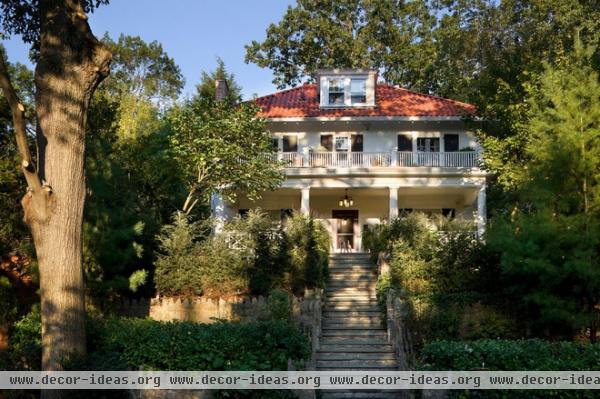
The home sits on a rise in the Park Hill neighborhood of Yonkers. It’s a true American foursquare. Sitting up on the hill with its symmetrical facade and boxy good looks, it communicates strength and solidity.
The clay tile roof, front porch etc. were there when Brewer bought the house in 1998. But of course, as with any older house, things needed repair, replacement and redoing. So the front porch was rebuilt and all new landscaping was done.
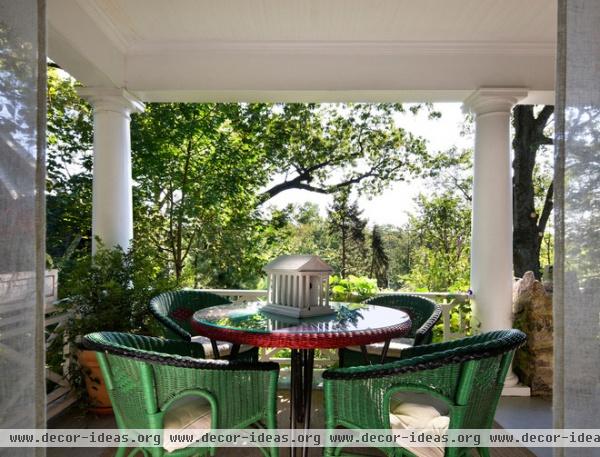
The front porch was rebuilt with new classical columns, a new ceiling and new railings. The new and improved porch creates that wonderful gesture to the street that was such an important hallmark of early-20th-century homes. What a great spot from which to survey the street.
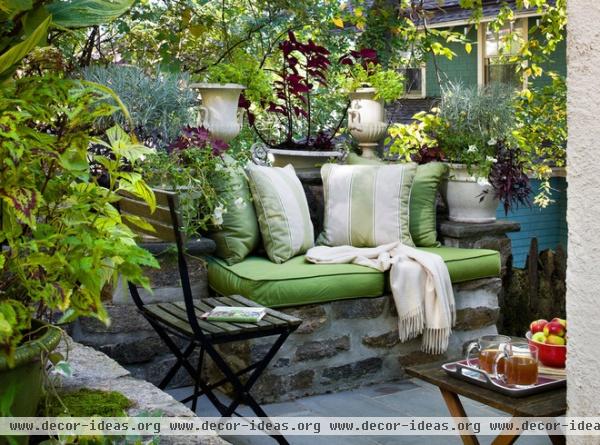
Rather than tackle the house first, Brewer redid the landscaping so that it would have a chance to mature while the house was being redone. This is a nice way of getting house and landscape to come together and be complete at the same time.
The landscaping effort included building an outside room with furniture built of bluestone and plants — a nice way to maintain some privacy in a dense suburb like Yonkers.
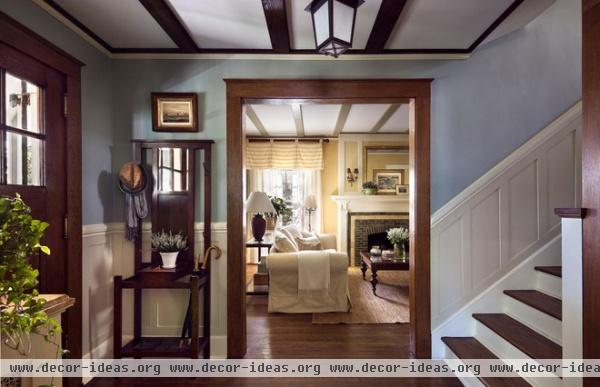
The house has a large central entry foyer and a stair hall with a formal living room and a dining room on each side. Large openings connect these rooms to the hall, allowing light and space to move freely about.
Brewer added beams to the entry ceiling and started to have the original woodwork stripped of paint. After what seemed an eternity, he decided to keep the remainder of the woodwork, like the wainscot going up the stairs, painted.
As we tour the house, you’ll see that Brewer has a wonderful sense of color. “Color is a way to highlight architectural detail,” he says.
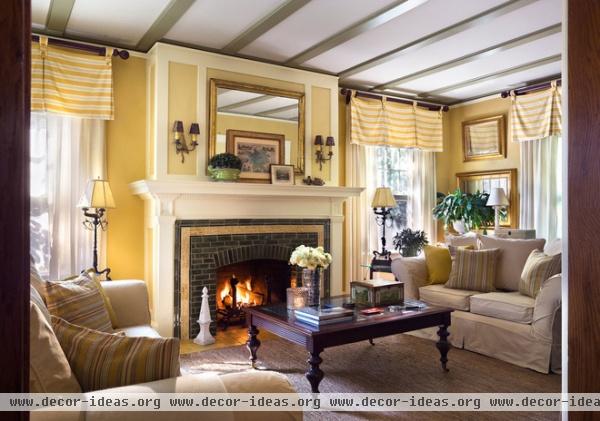
While the living room is essentially as it was, a room that spans from front to back and with beams in the ceiling, the big change is at the fireplace. Brewer reworked what was a large, dark brick Arts and Crafts design into something lighter and brighter. A new mantel and over-mantel piece are made of wood trim pieces painted white to contrast the walls.
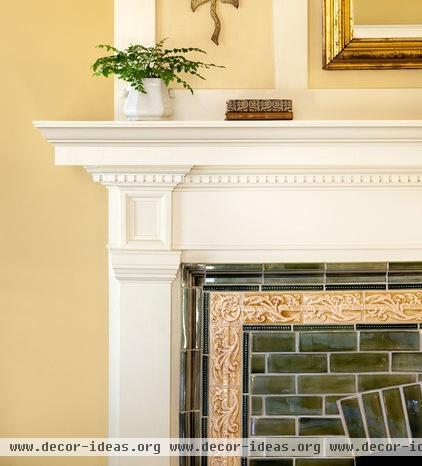
The tile surround at the fireplace is new yet looks original to the home — what Brewer calls his “making it more of what it already was” approach.
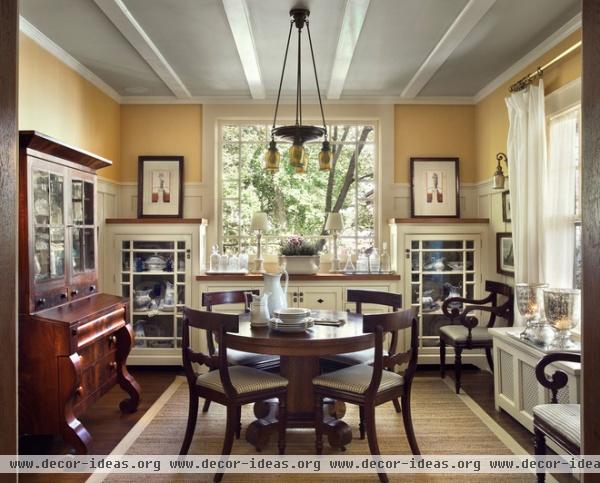
Opposite the living room is the dining room. The ceiling beams, large picture window and built-in cabinetry are all new. As is the light fixture, which looks like it could have been original to the house.
The picture window replaces a window higher up the wall designed to fit above a piano — a common feature of homes of this era. Not having a piano, Brewer decided to replace the old window with a new, larger one. “A trick to make a small house seem bigger is to use big windows that look out to the landscape,” he says.
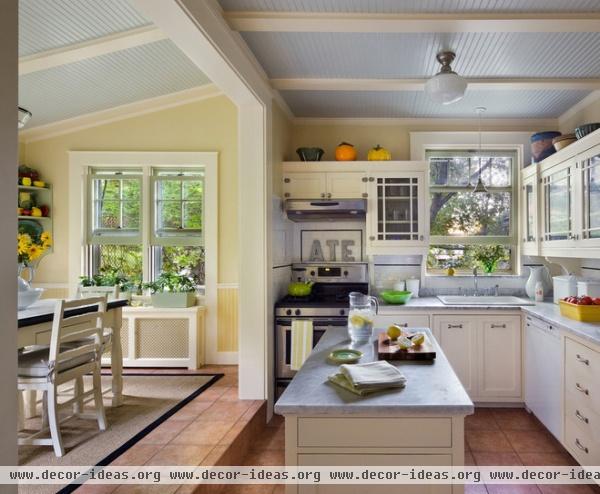
Brewer updated the original dark oak kitchen cabinets from the 1970s by adding new doors, refinishing the boxes and adding trim and new hardware.
He also increased the size of the window above the sink; added the beadboard, beamed ceiling and island; and replaced the vinyl flooring with tile. His goal: to create a kitchen that felt as though it was from the 1940s.
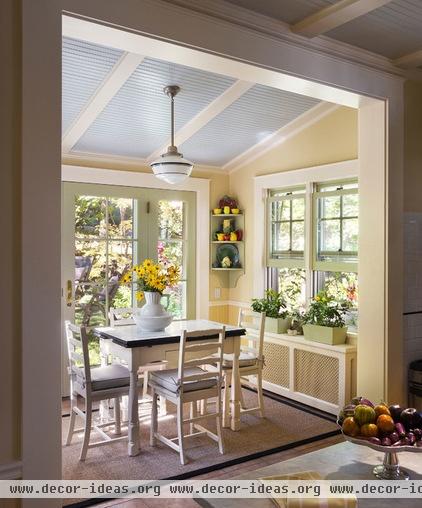
A view of the breakfast area really shows Brewer’s sense of how to use color to accent architectural detail. Even the window sash is painted another color.
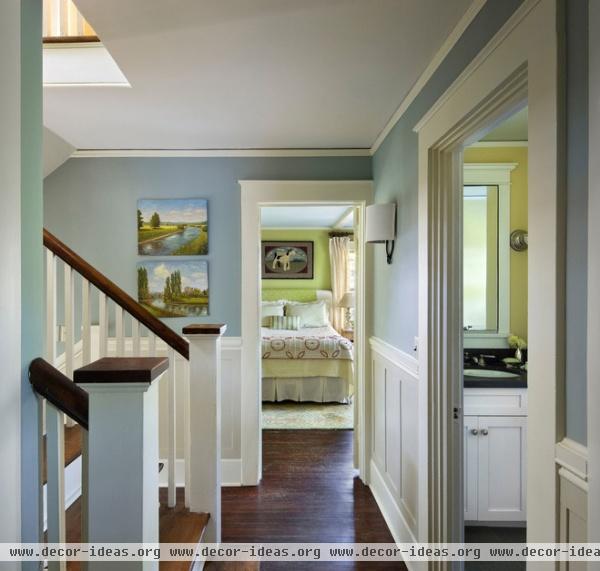
The center stair leads to a central hall on the second floor, with bedrooms and a bathroom off of this hall. The stair continues to a third-floor bedroom. This is the typical foursquare arrangement; the main circulation spine is in the center of the house, and rooms are arranged off this spine. All of which yields a really efficient plan.
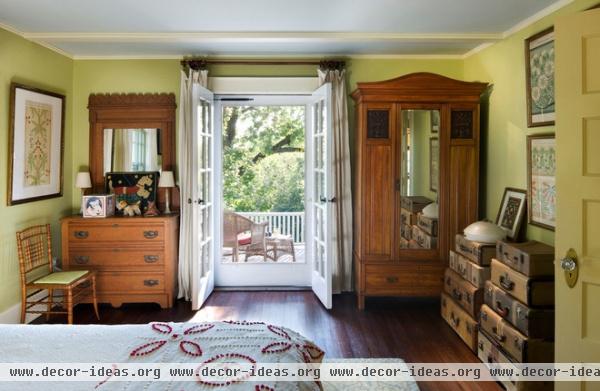
Large French doors lead to a balcony that’s formed by the porch roof. These doors allow an abundance of natural light and fresh air into the room. And because each room has at least two outside walls, there’s plenty of cross ventilation to keep the upstairs comfortable.
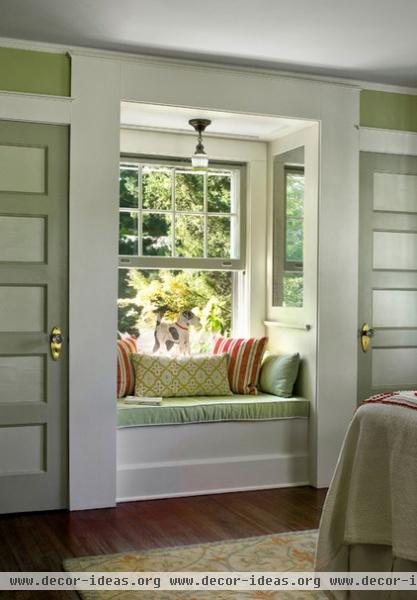
On the second floor, Brewer removed a wall between two bedrooms to create one large master bedroom. He also created a window seat, or what he calls “a charming moment” between two closets. Mirrored panels at the sides of the window seat create the illusion that the seat is in a bay window. The mirrors also add a play of light to the room.
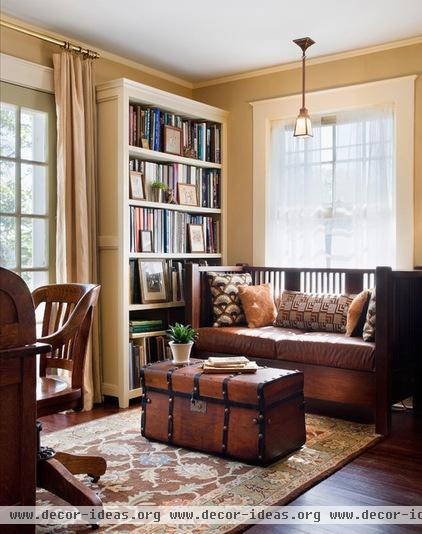
Another of the second-floor bedrooms is used as a study. Brewer, a flea market devotee, has filled the home with a wonderfully eclectic collection of items purchased over many years.
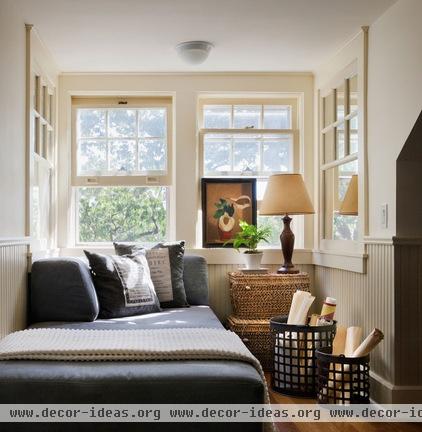
The third-floor bedroom is in a roof dormer. Mirrored glass in the side walls helps fill the space with light.
While Brewer says his home “isn’t really special, as it can be seen everywhere in the country,” it really is special because of the richness of detail and the care he and his wife have given it.












